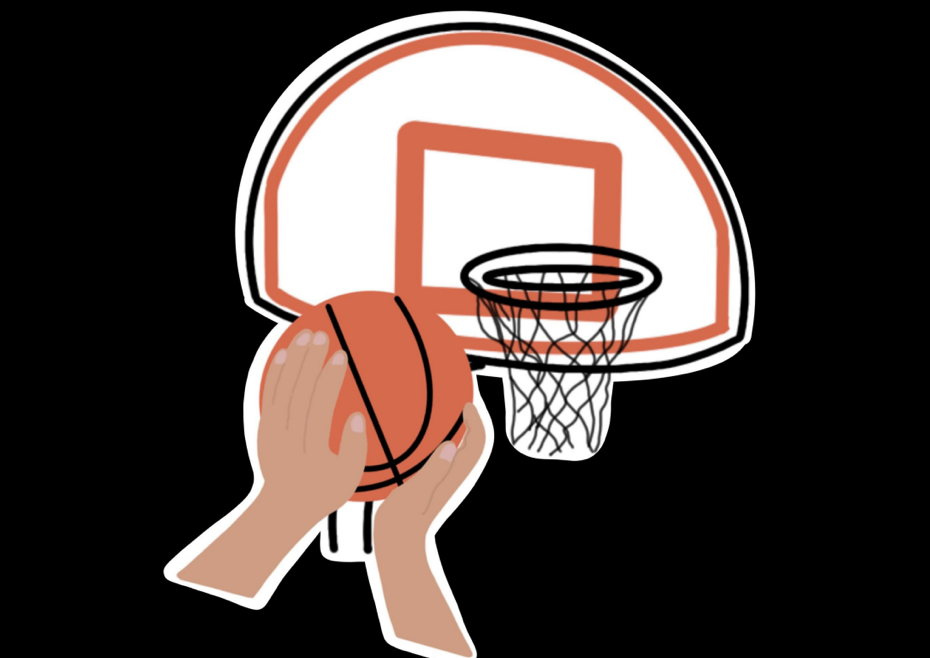
GRAPHIC: SADIE HENZES ’24/THE HAWK
A statistical analysis of St. Joe’s relationship with the long distance shot
In St. Joe’s 62-74 loss to the University of Dayton Flyers, one number above all others jumped off of the stat sheet: the Flyers attempted 11 three-pointers in the game.
They shot roughly seven less three pointers than their season average. The team made five of their 11 attempts. On the other hand, the Hawks made eight shots from three-point distance. St. Joe’s took twice as many shots from long-range than Dayton, putting up 22 three-pointers in the contest.
The disparity in three-point shots between St. Joe’s and its opponents is not a new trend. In every game but two this season, St. Joe’s has tallied more three-point attempts than its opponents. The Hawks lead the Atlantic 10 (A-10) Conference in threes attempted per game.
But St. Joe’s three-point volume has actually decreased from previous seasons. In Head Coach Billy Lange’s first year at St. Joe’s, the Hawks shot 30.2 threes a game and made 29.7% of them. Last season, the team shot just above that clip, converting on 31.4% of its threes on 30.45 attempts per game.
This year, the Hawks are averaging over four less three-pointers per game with an average of 26.2 attempts. Even though the team’s three-point percentage has increased two full percentage points from a year ago to 33.5%, it ranks just ninth in the A-10.
On the defensive end, the Hawks boast the sixth-best three-point defense in the league and hold its opponents to 33% from beyond the arc. This is a substantial improvement from Lange’s first two seasons, when opponents shot 37.1% and 35.1%, respectively from long distance. St. Joe’s also surrenders the second least three-point field goal attempts per game in the league. Opponents, on average, make 6.1 of 18.52 three-point attempts per game.
So, how do all of these numbers equate to wins and losses? For games this season when St. Joe’s has shot less than 26.2 attempts from three, it has posted an above .500 win percentage record at 7-6. Its three-point field goal percentage is also higher at 35 percent. When it has held its opponents to below 33% from beyond the arc, it’s also 7-6.
It appears that for St. Joe’s, there is a heavy emphasis on the three-pointer, both in getting them up on the offensive end and limiting its opponents from taking them on defense.
Analytically-speaking, this strategy is sound. Data supports the idea that the reward of a three-point shot is worth more than the risk.
Colloquially-speaking, it could be a good thing to shoot a lot of threes, even if the percentage of shots the team makes is less than stellar.
A look into the A-10 standings, however, may paint a different picture. Five of the league’s top six teams place eighth or better in three-point field goal percentage. However, only two of the league’s top six teams rank in the top eight in three-point field goal attempts.
At what point does quality supersede quantity? It’s a question you may see resolve itself on the court the rest of this season.